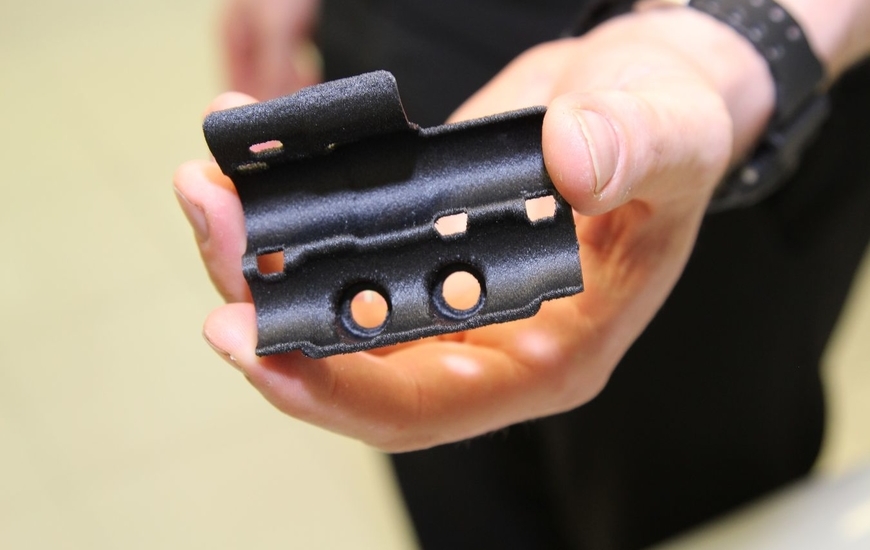The collaboration between Composites Portal/Portale Compositi and the DICAR of the University of Catania continues on the most current issues in the composites sector. Below you can read the second contribution.
by GIANLUCA CICALA* and CLAUDIO TOSTO**
Additive Manufacturing (AM) is now present in almost all sectors: from aerospace to automotive, from consumer to biomedical.
In particular, there is a part of the AM universe that deserves special attention: it is the AM of Composites.
What makes these materials so distinctive is certainly their manufacturability and variability of mechanical properties as the types of reinforcements/matrices studied vary.
Furthermore, the materials available for this technology allow printing not only lightweight structures but also extremely durable and resistant.
In this issue we will analyze the most recent applications, as well as the new generation of continuous fiber composite AM technologies.
There are several techniques of AM composites: Fused Filament Fabrication (FFF), Liquid Deposition Modeling (LDM), Stereolithography (SLA), Laminated Object Manufacturing (LOM), Composite-Based Additive Manufacturing (CBAM) and Selective Laser Sintering (SLS).
Certainly the most widespread and relatively simple technique is the FFF.
In particular, the material that is widely used is CF PA-12 filament (polyamide 12 matrix composite, reinforced with carbon fibers).
This material allows the printing of highly durable components characterized by high rigidity and tear strength values.
A winning application of FFF (or in this case FDM) of composites is that created in 2017 by the McLaren's F1 Team, which used a Stratasys printer to produce race-ready parts for the MCL32.
Yes, directly printed parts with a Fortus 450mc with carbon-fiber-reinforced nylon material have been installed on the MCL32 race car, this is the case of a structural bracket to attach the hydraulic line. This solution made it possible to produce the component in just 4 hours, while the delivery time by traditional manufacturing is around 2 weeks.
Not only that, FDM technology was used as AM Tooling to facilitate the manufacturing process of composites. In fact, a large rear wing flap extension to increase rear downforce in carbon fiber-reinforced composites using a FDM lay-up tool was manufactured.
Finally, as we have already cited in other articles, the F1 Team made use of sacrifical tool (by using soluble material) to create hollow composite brake-cooling ducts.
"If we can bring new developments to the car one race earlier" said Neil Oatley, Design and Development Director, McLaren Racing "going from new idea to new part in only a few days - this will be a key factor in making the MCL32 more competitive. By expanding the use of Stratasys 3D printing in our manufacturing processes, including producing final car components, composite lay-up and sacrificial tools, cutting jigs, and more, we are decreasing our lead times while increasing part complexity”.
So far we have seen the applications of FFF / FDM 3D printing, which requires continuous research and development for the improvement of printed parts.
In fact, if on the one hand it is an accessible and relatively simple process, FFF suffers from limitations like porosity and voids. The presence of voids leads to delamination and reduced tensile strength.
In addition, the high intrinsic anisotropy of the printed parts must be taken into consideration.
In fact, the fibers tend to line up along the direction of deposition of the filament, with a consequent reinforcement more marked along the extrusion direction than the direction between the layers.
Hence the need for AM innovative processes focused on materials development, porosity, alignment and homogeneity of the fibers, interlayer bonding and fiber-matrix interface.
The real turning point is to go beyond the great limit of AM composites: low productivity.
Production techniques that synchronize multiple robots for faster processing are making great progress. They consist of integrating the classic extrusion heads with multiaxis robotic arm in order to expand the manufacturing scale by providing additional degree of freedom to print FRPC.
An example is the process implemented by Arevo (Milpitas, Calif., US), which consists of a scalable Robot-based Additive Manufacturing Platform (RAMP) for fabricating 3D printed composite parts. Arevo's applications include: a customizable unibody eBIKE, a one-piece tennis racket, golf putter, drone frame etc.
Another interesting application for large manufacturing of FRPC sees the combination of Inkjet and LOM processes with ultrasonic cutter: the so-called Selective Lamination Composite Object Manufacturing (SLCOM).
We cite the example of Envisiontec (Dearborn, Mich., US), which with the industrial printer SLCOM 1 with a build envelope of up to 762 x 610 x 610 mm3 can make parts with dimensions for use in aerospace, automotive, and sporting goods applications, among others.
Envisiontec manufactures small and large composite components by using woven fiber material (traditional prepregs like woven reinforcement of Kevlar, carbon, and glass fibers), which are impregnated with thermoplastic matrix, then bonded and cut.
Another composite-based LOM manufacturer is Impossible Objects, which uses an inkjet-based bonding process to produce composites parts.
In this process, called CBAM (Composite-Based Additive Manufacturing), consecutive Long-fiber sheets of carbon or fiberglass are stacked and fused together, using a binding agent (polymer powder), and compaction while heating. The bonding is locally modulated by depositing a liquid using inkjet printing.
High volume manufacturing, low-cost printing, high-value and high strength printing, stronger, stiffer, and lighter parts with increased precision and greater quality control characterize the goal of the processes just described.
From this point of view, the AM techniques that use continuous fibers lend themselves to becoming the next-generation composite fabrication methodology.
* Professor of Materials Science and Technology (University of Catania)
** PhD Student Polymers and Composites Lab (University of Catania)
-

-
29 July 2020






















